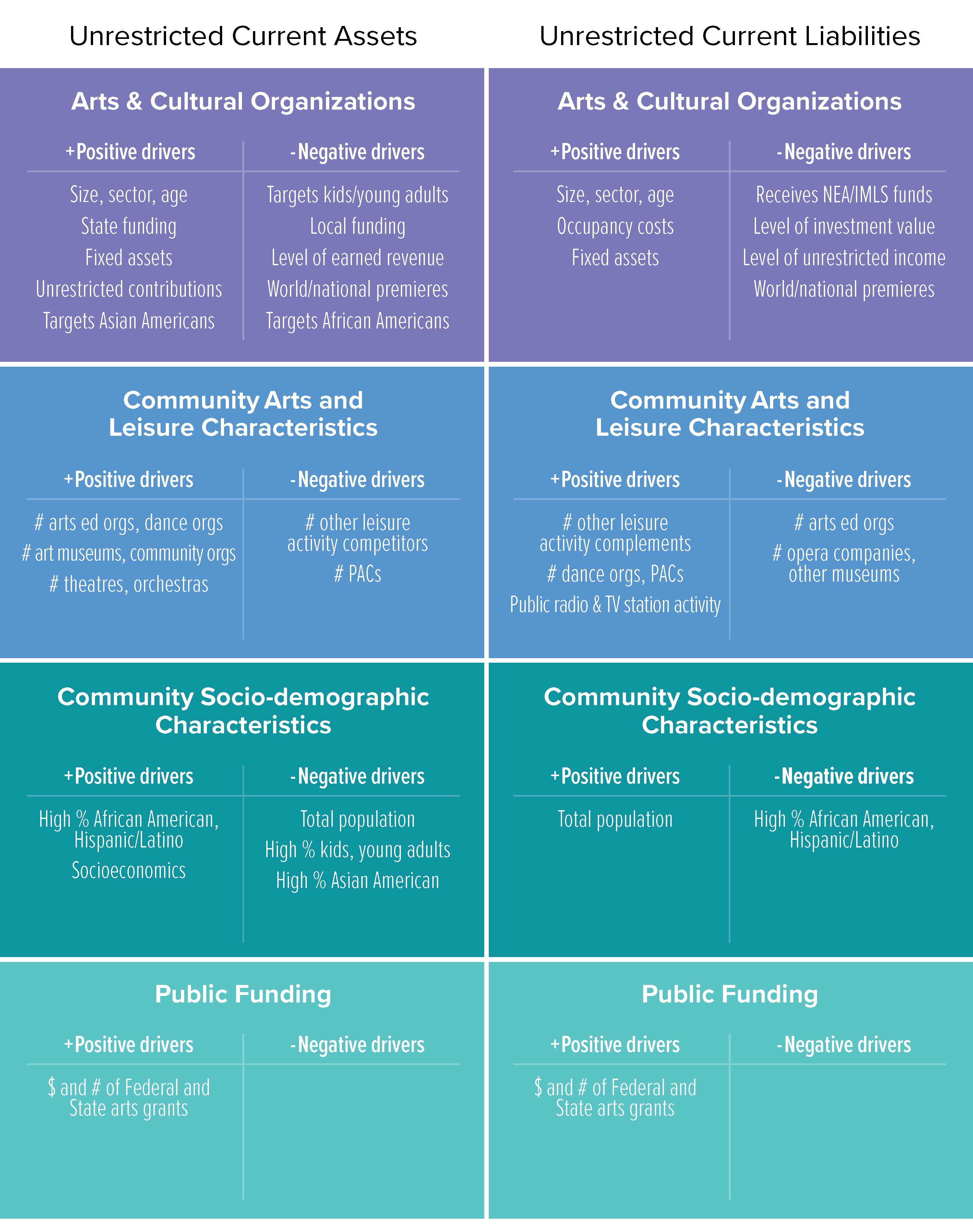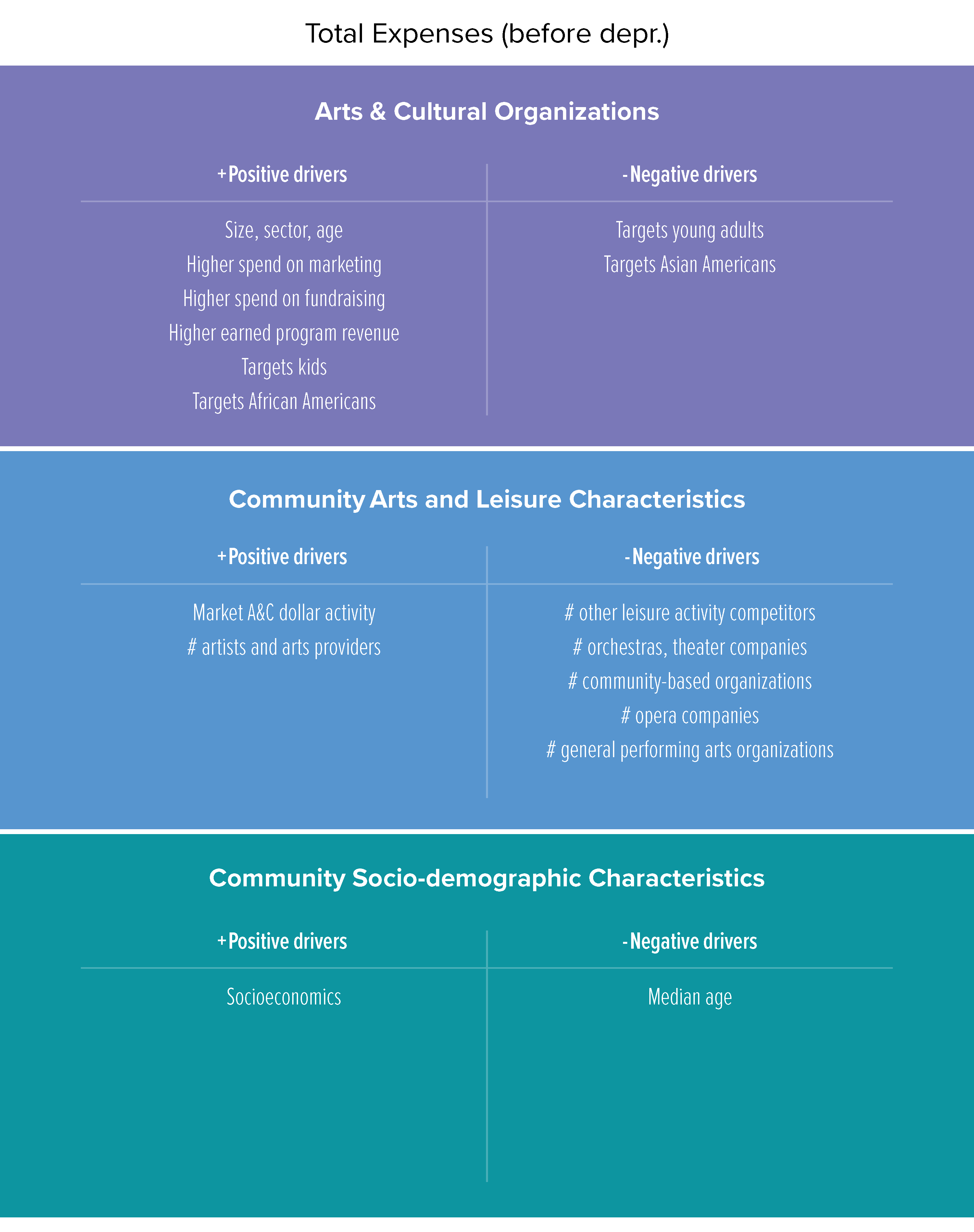Drivers
What organizational characteristics affect this performance?
- Total unrestricted current liabilities tend to be higher for organizations with higher levels of fixed assets and occupancy costs.
- When organizations have higher unrestricted revenue or when they have a high level of investments, unrestricted current liabilities tend to be lower. Unrestricted current liabilities also tend to be lower when an organization’s offerings include a high proportion of world or national premieres, or when they receive more federal support.
How do community arts and leisure characteristics affect performance?
- Unrestricted current liabilities tend to be higher for organizations in communities with higher levels of public broadcast activity, as well as other leisure activities.
- Having more PACs or dance companies in a community tends to raise the level of unrestricted current liabilities for all organizations in these sectors within a market. By contrast, the more opera companies, arts education organizations, or other museums, the more likely each is to have lower unrestricted current liabilities.
How do socio-demographic characteristics of the community affect performance?
- Unrestricted current liabilities are higher for organizations in more populous communities.
- Unrestricted revenue tends to be lower in communities with proportionally more Hispanics/Latinos or African Americans.
What impact does public funding have on performance?
- Overall state and federal grant activity in the larger local marketplace has a positive effect on an individual organization’s level of unrestricted current liabilities.

